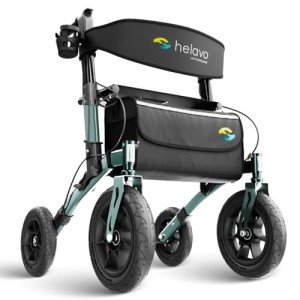The Most Successful Walking Aid Gurus Can Do Three Things
Understanding Walking Aids: Enhancing Mobility and Independence
Walking help play an important function in improving mobility and independence for people with differing degrees of physical limitations. They can considerably enhance the quality of life by supplying support, stability, and confidence when moving around. This post explores the different types of walking aids, their advantages, aspects to think about when picking one, and answers to often asked questions to help guide those seeking assistance.
Kinds Of Walking Aids
Walking help can be found in various types, each created to deal with particular requirements. Let's take a more detailed take a look at some commonly utilized walking aids:
Type of Walking Aid
Description
Suitable For
Canes
A single stick that offers support and balance, normally made from wood or aluminum.
People with mild instability or requiring minimal support.
Walkers
Frames with four legs that supply stability and support for people who require more assistance than a walking stick can offer.
Individuals with moderate mobility problems or recuperating from surgery.
Rollators
Similar to walkers however geared up with wheels, handbrakes, and a seat for resting.
People who need mobility support however can walk brief ranges.
Crutches
Two long poles that supply support by positioning weight on the arms. They frequently require strength and coordination.
People recovering from leg or foot injuries.
Mobility Scooters
Electrically powered scooters developed for people with significant mobility disabilities.
Individuals who can not stroll cross countries or have extreme physical restrictions.
Benefits of Using Walking Aids
Integrating a walking aid can result in numerous benefits, consisting of:
- Increased Stability: Walking aids help in reducing the threat of falls by providing extra support and balance.
- Enhanced Independence: Individuals can perform everyday activities with greater ease and self-confidence, decreasing the need for assistance from others.
- Discomfort Relief: Some walking aids help ease discomfort in the joints, such as hips or knees, by redistributing weight.
- Improved Posture: Many walking help motivate much better posture, which can cause decreased stress on muscles and joints.
- Physical Activity: An appropriate walking aid motivates people to stay active, promoting cardiovascular health and overall well-being.
Factors to Consider When Choosing a Walking Aid
Picking the best walking aid is vital for maximizing its benefits. Here are several aspects to think about:
- Level of Mobility: Assess the person's capability to stroll individually and determine the degree of support necessary.
- Physical Strength: Consider upper body strength, as some aids require more muscular control (e.g., crutches).
- Environment: Evaluate both indoor and outdoor environments to determine the best kind of walking aid based on surfaces and obstacles.
- Height and Size: Ensure that the walking aid fits the user properly. Many help have adjustable height settings.
- Weight Capacity: Be conscious of the weight limits of different help to avoid prospective accidents or malfunctions.
Popular Walking Aids: A Quick Comparison
For a more simplified view of popular walking help, here's a table comparing their viability for various requirements:
Walking Aid Type
Support Level Needed
Suitable User Type
Weight Capacity
Mobility
Walking sticks
Low
Seniors, moderate injuries
Approximately 300 lbs
High
Walkers
Moderate
Post-operative, neuromuscular conditions
As much as 400 pounds
Medium
Rollators
Moderate to High
Elderly, active people requiring rest
Up to 300 pounds
Medium
Crutches
Moderate to High
Injuries or surgical treatments
Differs extensively
Medium
Mobility Scooters
High
Limitations in leg strength
Up to 500 pounds
Low
Regularly Asked Questions (FAQs)
1. How do I know if I need a walking aid?It is a good idea to
seek advice from with a health care professional or physical therapist if you experience trouble walking, balance issues, regular falls, or joint discomfort. They can recommend the very best type of aid for your situation. 2. How should I utilize a cane properly?Position the walking stick on the side opposite to the injury or weakness. Hold it with the hand on that side while the walking stick supports motion on the injured side. Normally, My Mobility Scooters walking stick needs to move forward with the hurt leg. 3. Can I use several walking aids?Yes, individuals might shift between varioushelp based upon their mobility needs at any**
time. For instance, a person might utilize a walker in the house but shift to a walking stick when walking short distances outdoors. 4. How do I maintain my walking aid?Regularly look for wear and tear, specifically on rubber suggestions for canes/walkers, and guarantee wheels on rollators and scooters are functioning effectively. Cleaning can assist extend the life of the aid. 5. Will insurance coverage cover the cost of a walking aid?In numerous cases, medical insurance or Medicare might cover part or all of the expense of a clinically essential walking aid.**
**It is necessary to talk to your insurance supplier for particular standards. Walking aids are important tools that make it possible for people to restore self-reliance and improve their mobility. The appropriate selection based on personal requirements and choices can result in considerable enhancements in quality
of life. With a variety of alternatives available, people and caregivers must evaluate their distinct situations carefully to select the most suitable walking aid. Whether it's an easy walking cane for support or a mobility scooter for those with severe limitations, the right walking aid can make all the difference in achieving better mobility, security, and ultimately, a more active lifestyle.  **
**